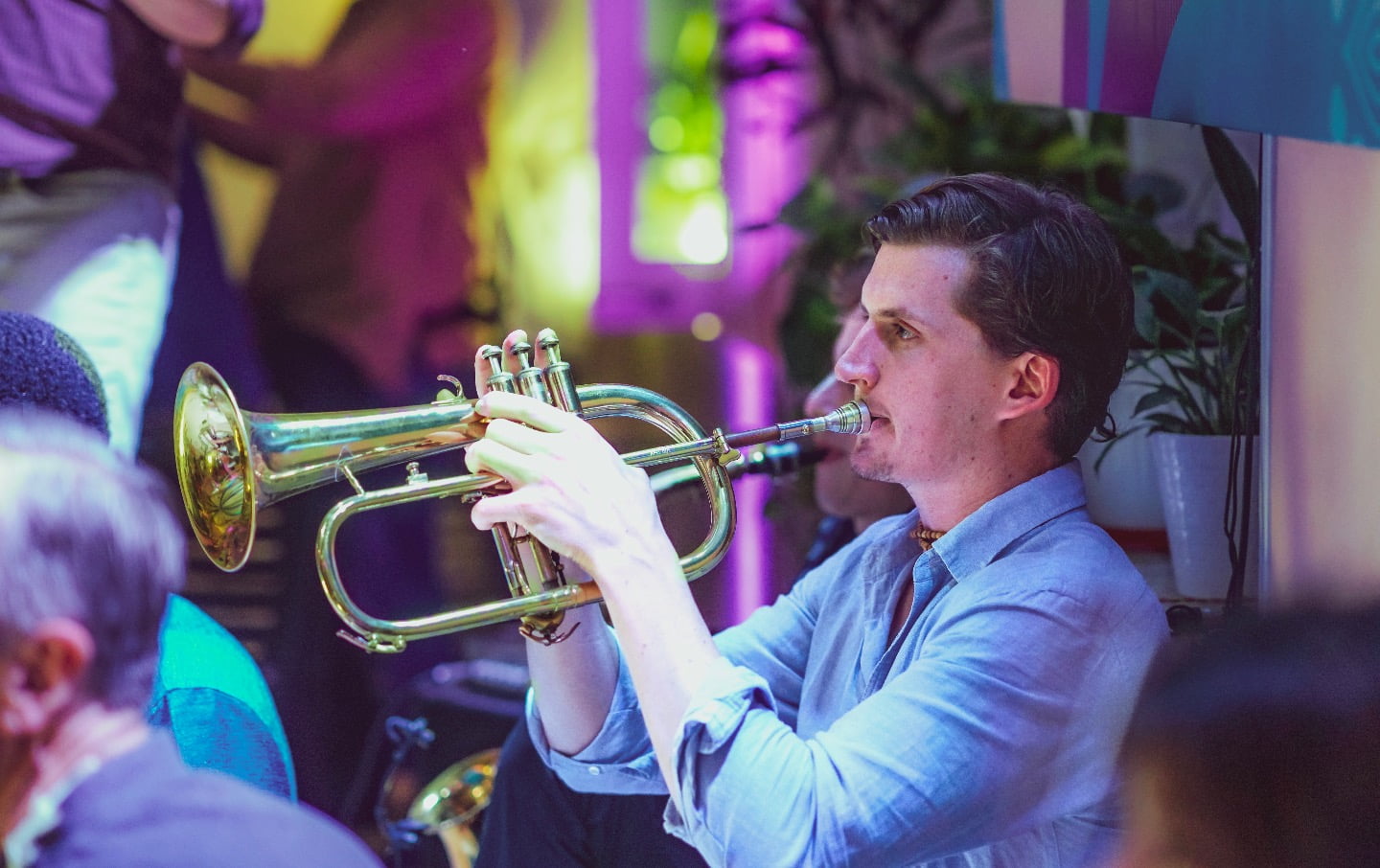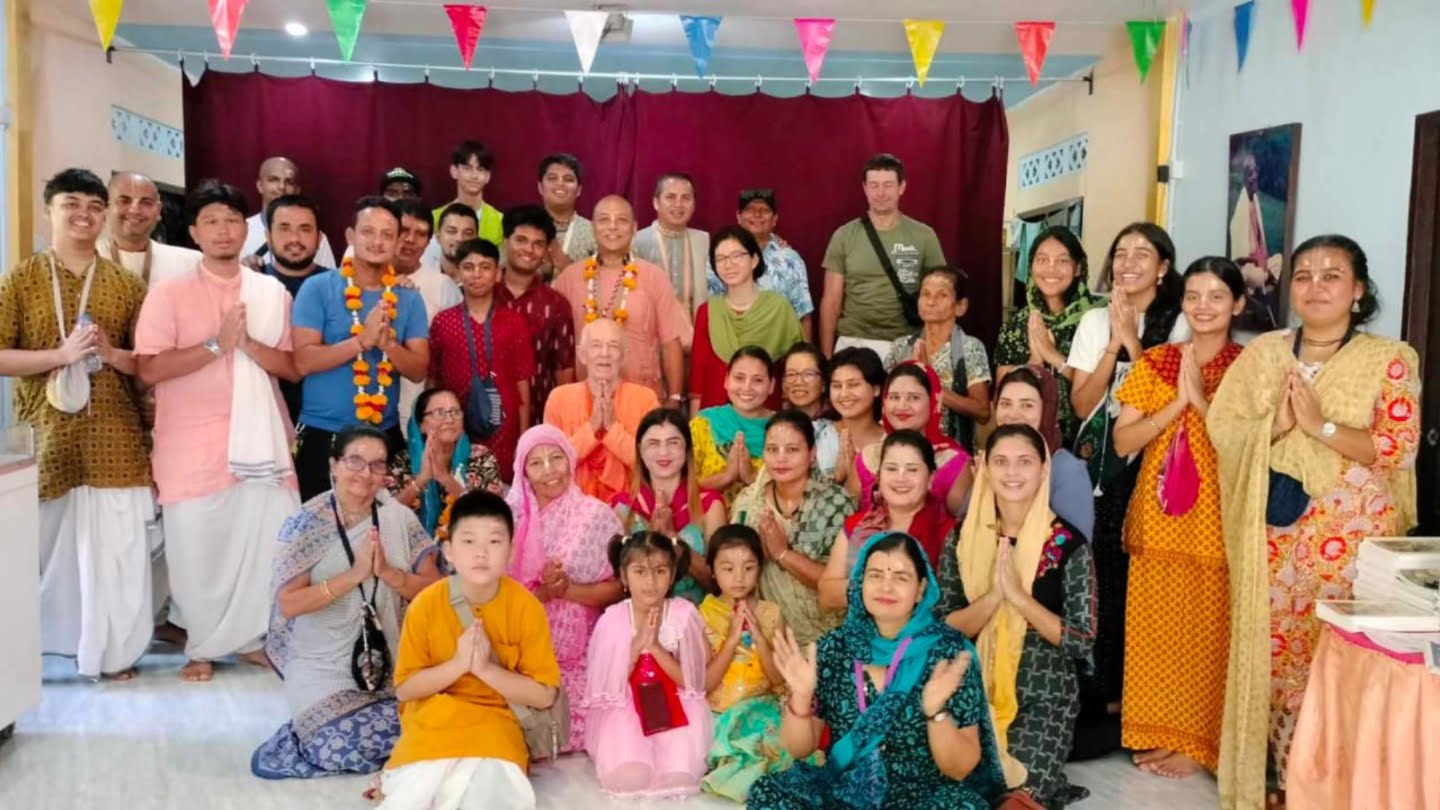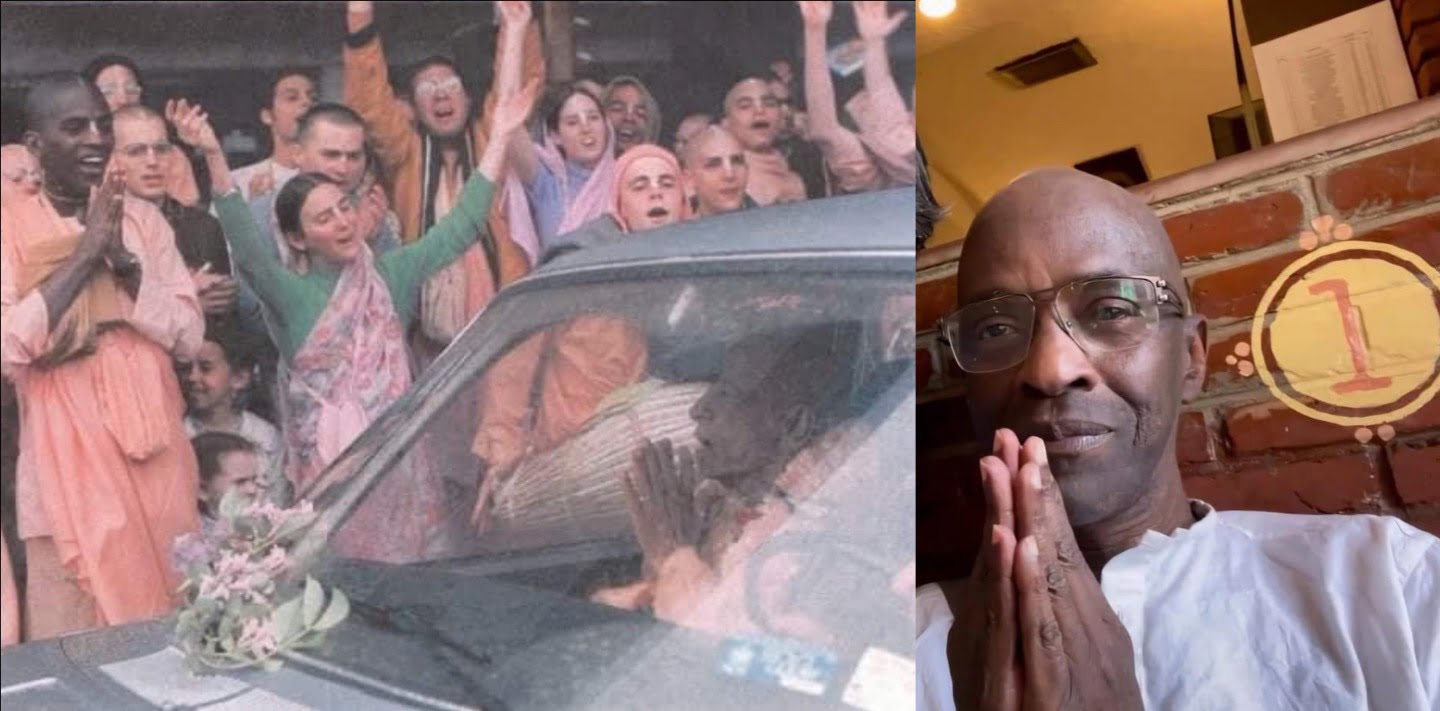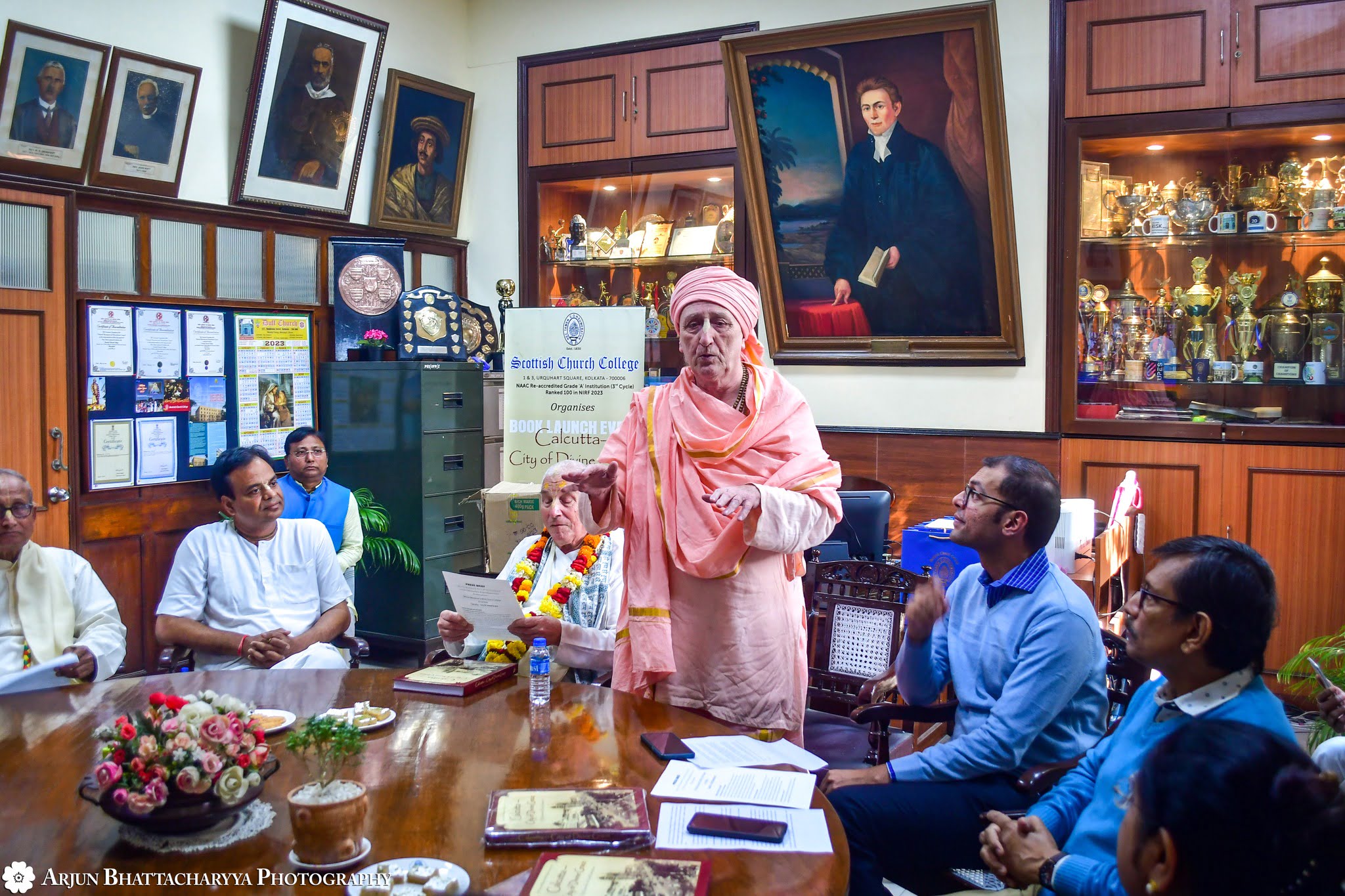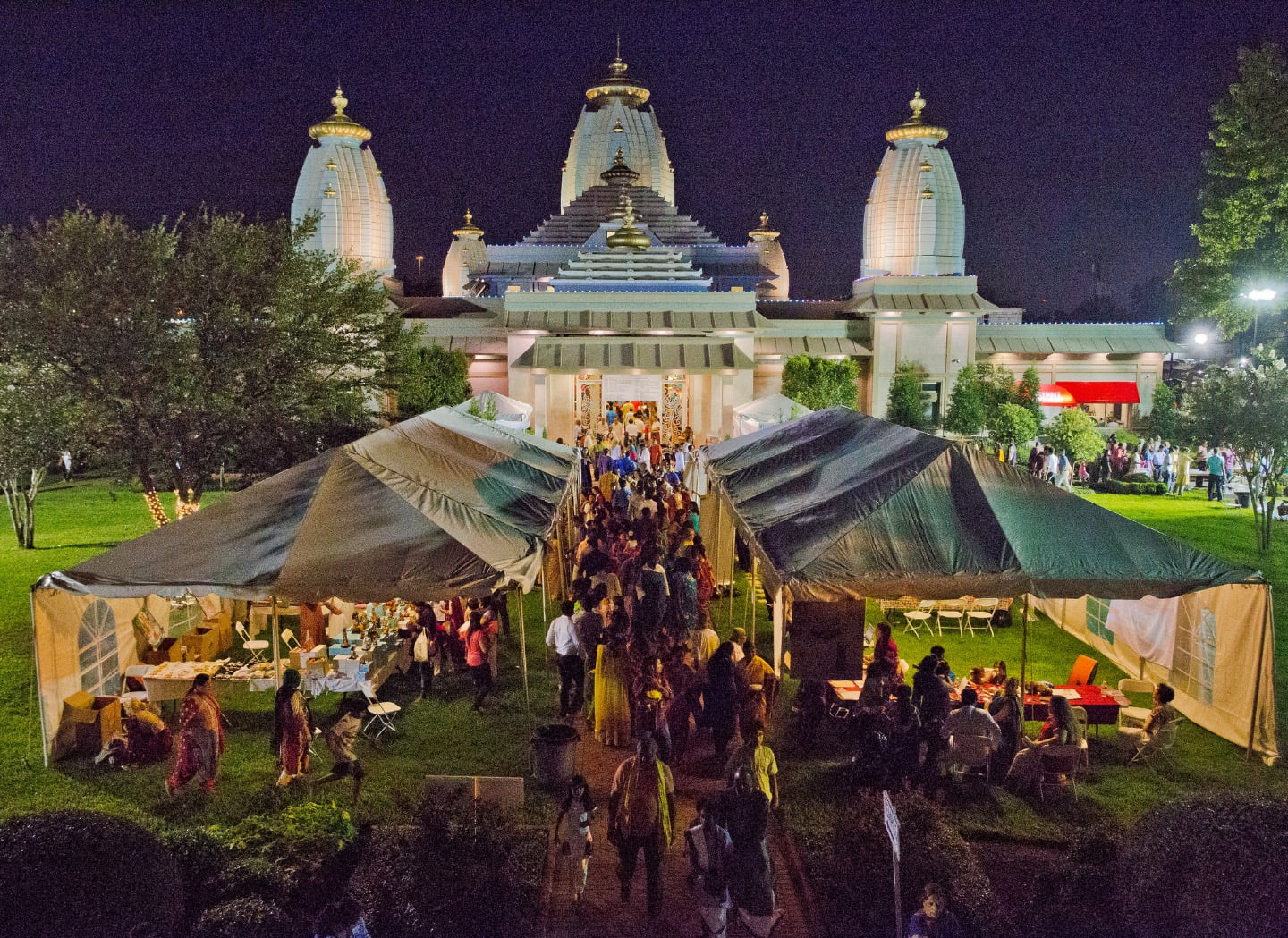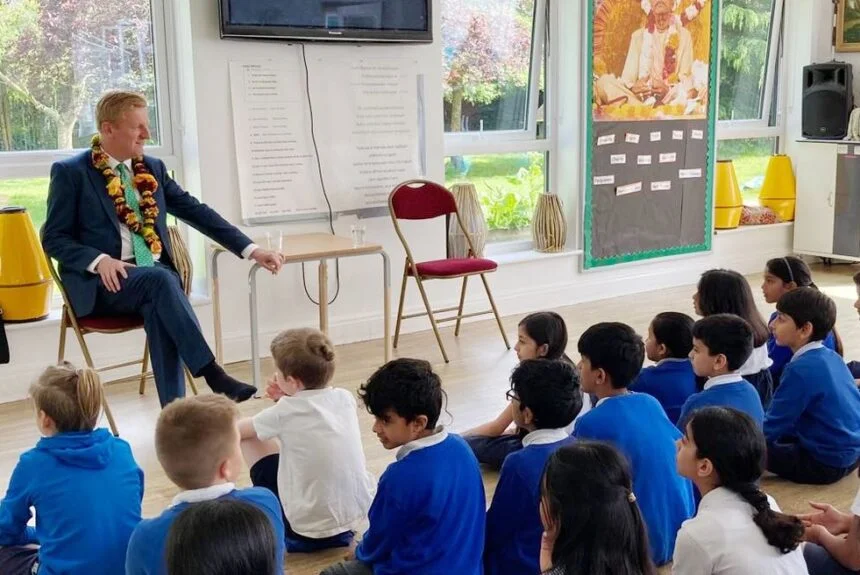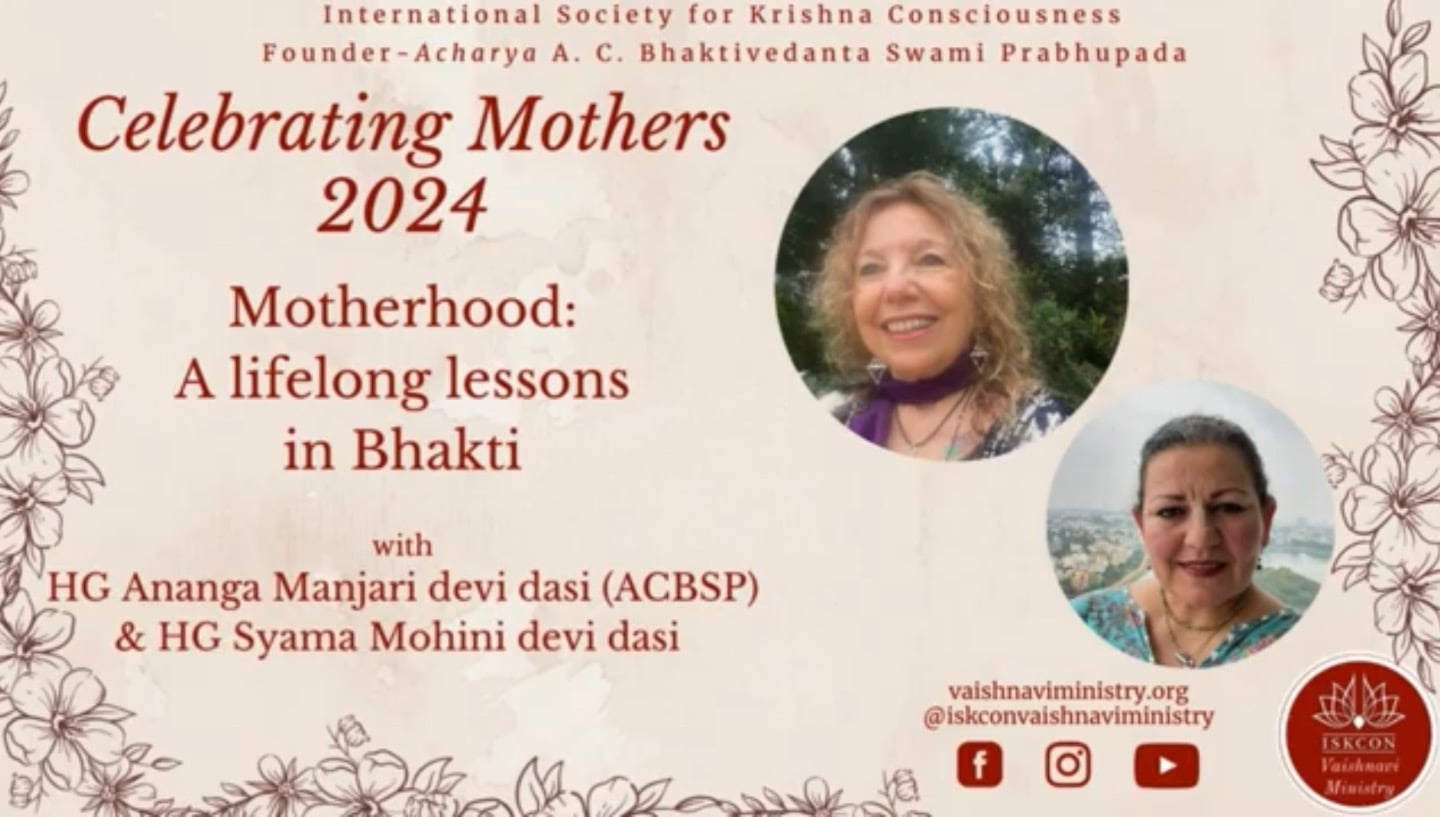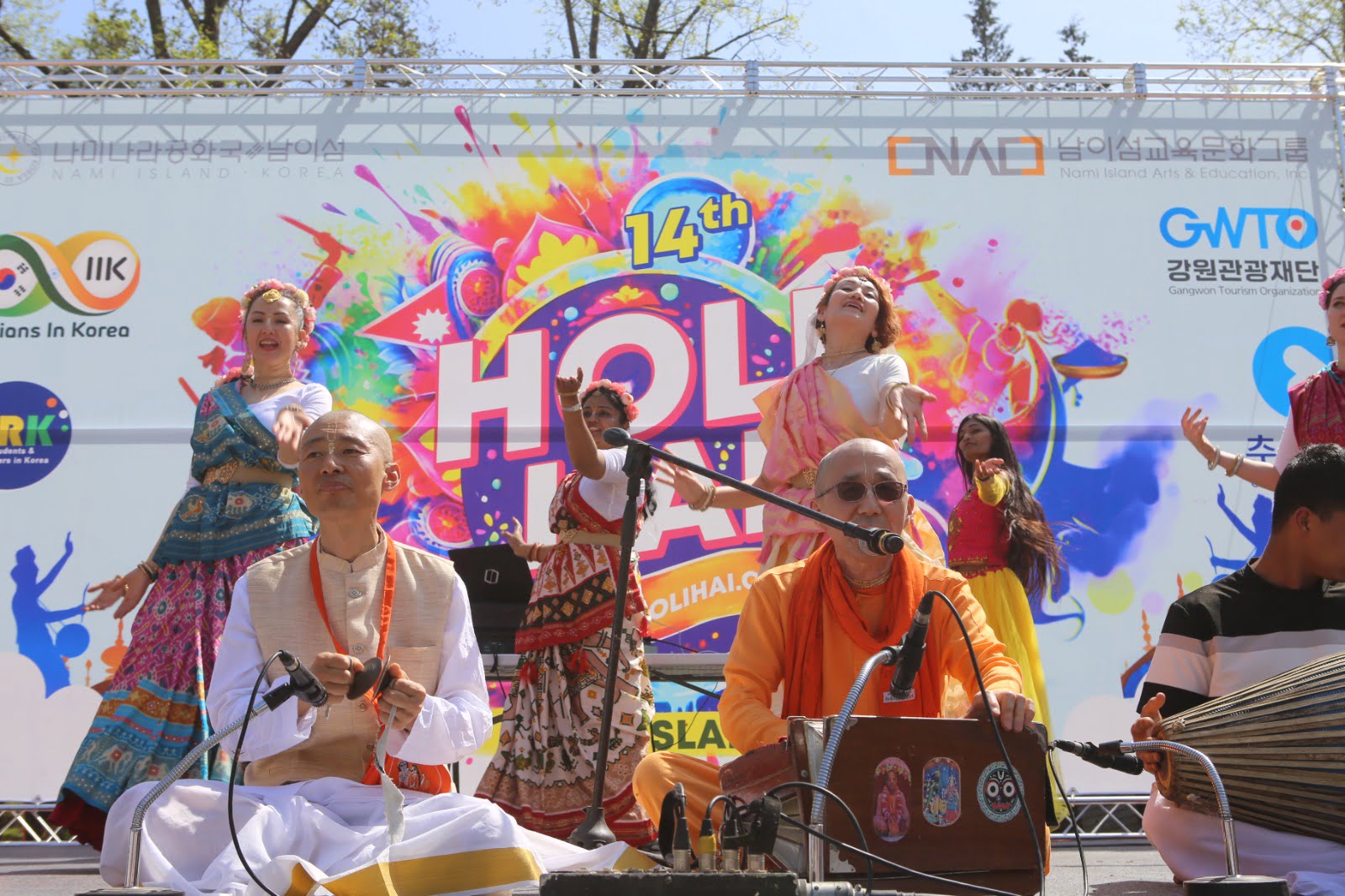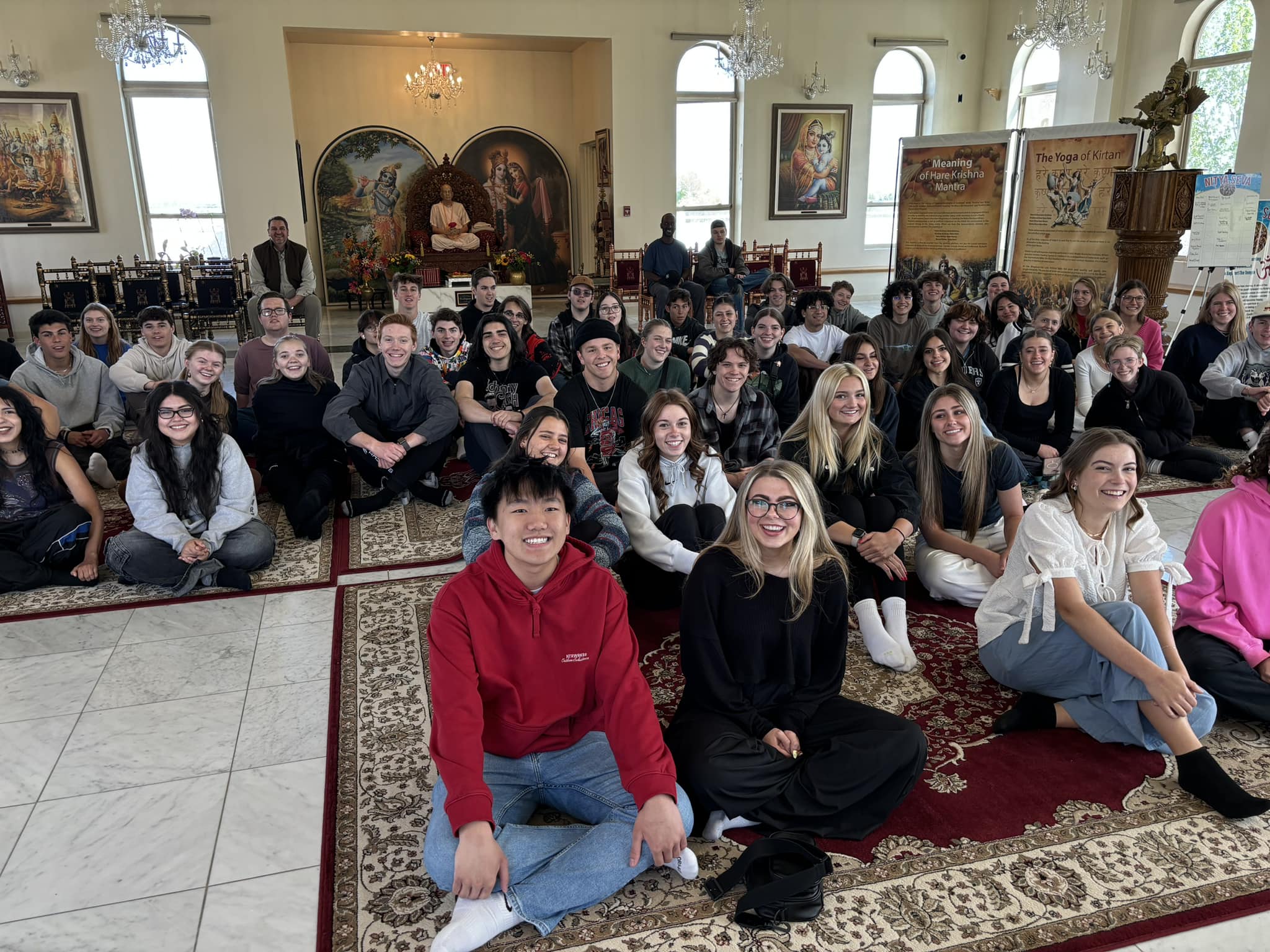Thousands Light Up Vrindavan for Month of Kartik
By Madhava Smullen | Oct 27, 2012
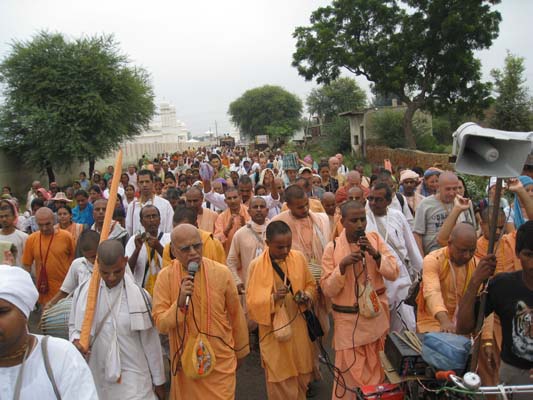
Thousands of pilgrims from around the world are expected to flood into the sacred town of Vrindavan, India—where Lord Krishna lived 5,000 years ago—for the holy month of Kartik, from October 29th to November 28th.
The month of Kartik is bookended by two full moons. It commemorates the time when as a small child, Lord Krishna, also known as Damodar, was tied to a wooden grinding mortar by His mother Yashoda for being naughty—as usual.
Trying to escape, He dragged it along with Him, and as He passed through the narrow gap between two trees, He pulled them to the ground.
Thus Kartik is also known as the month of Damodar, and is very dear to Lord Krishna’s eternal consort Srimati Radharani, who is known as the Queen of Vrindavan.

Kartik is very dear to Srimati Radharani, the Queen of Vrindavan
For obvious reasons, Kartik is a special month for Vaishnavas—anyone who lights a lamp and offers it to Lord Damodar during this month, explains the ancient scripture the Padma Purana, will return to the spiritual world.
And what could be a better place to do that than Vrindavan, where Lord Damodar Himself resided?
“In the early days of ISKCON, we had the Mayapur-Vrindavan festival,” says Deena Bandhu Das, who has lived in Vrindavan for 28 years and serves as a pilgrimage guide. “In March every year, devotees would visit both Vrindavan and Mayapur, the holy city in West Bengal where Sri Chaitanya Mahaprabhu lived. Gradually, however, the Mayapur festival became the focus at that time of year, and Kartik became Vrindavan’s main attraction.”
For many devotees, especially the younger generation, the famous 24-Hour-Kirtan at ISKCON Vrindavan’s Krishna Balaram Mandir is a major Kartik draw. Started in 1986 by Aindra Das, who passed away in 2010, it is continued on by the devotees he inspired.

The 24 Hour Kirtan, led here by the late Aindra Das during Kartik 2009, continues on today
During bustling Kartik, of course, it reaches its enthusiastic peak. The temple room becomes so crowded that a platform is built for the musicians that extends out into the courtyard. The evening 5:30pm to 6:30pm session, in particular, brings chanters to their feet and sees them throwing themselves into the chanting of God’s Holy Names with every ounce of energy they’ve got.
At 7:00pm daily, the Damodarastakam prayers, heralding the Lord’s famous Damodar pastime, are sung. Meanwhile, thousands of devotees line up to offer small ghee lamps to the Deities of Sri Sri Krishna Balarama, Radha Shyamasundar, and Gaura Nitai.
“It’s a stunning, awe-inspiring sight,” says Deena Bandhu. “The entire temple room and courtyard is filled with an ocean of glowing lamps.”

An ocean of lamps for Lord Damodar
After Damodarastakam, at 7:30pm, devotees go on to the nearby Balarama Hall every night. There, they sing Gopi Geet, a collection of verses from the 31st chapter of the tenth canto of Srimad Bhagavatam, in which the pure gopi girls of Vrindavan call out to Krishna.
Another major highlight of Kartik in Vrindavan is, of course, the parikramas, or pilgrimages. Every year, ISKCON guru Lokanath Swami heads up the massive Braj Mandala Parikrama, which drew 1,500 devotees last year for its 25th anniversary, and is expecting a similar attendance this year.
Participants travel by foot from holy place to holy place in and around the town now called Vrindavan for the entire month of Kartik, camping in tents or sleeping in local school buildings.

A devotee offers a lamp to the Lord with love and devotion
Rising daily at 4:00am and chanting Krishna’s names congregationally as well as on their japa beads, they begin walking early and average fifteen kilometers per day—sometimes up to twenty-five.
At each holy place, Lokanath Swami and other senior devotees tell stories related to the location and speak about Krishna’s glories.
Meanwhile, for those who prefer a bed and a roof over their head at night, Deena Bandhu takes a group of devotees out on pilgrimage every day by bus, leaving in the morning and returning to Krishna Balaram Mandir for lunch at 3pm.
Occasionally, they’ll eschew the bus and take a boat ride down the river Yamuna to return to the temple. Often, they’ll meet up with the larger Braj Mandala Parikrama.

Pilgrims sometimes take boats back down the Yamuna at the end of their day
“The Parikrama will start on October 29th, with an enchanting moonlight pilgrimage of Govardhana Hill, where Krishna’s cows grazed,” says Deena Bandhu. “A couple of days after, we’ll visit the Vrindavan temples established by the six Goswamis, including Madan-Mohan, Radha-Raman, and Radha-Damodar.”
The pilgrimage will also visit the forests of Madhuvan and Talavan and the sacred lakes Radha Kunda and Kusum Sarovar, as well as Ter Kadamba, the spot where the Vaishnava saint Rupa Goswami resided and worshipped the Lord.
“It’s a very beautiful, peaceful place, with many peacocks,” says Deena Bandhu. “On the same day, we’ll also visit Javat, where Srimati Radharani married Abhimanyu, and stayed with Jatila and Kutila, her mother- and sister-in-law.”

Kusum Sarovar
The pilgrimage will also visit Gokula, where Lord Krishna was delivered to Nanda Maharaja and mother Yashoda from his birth parents Vasudeva and Devaki, and where he killed the demons Putana, Trinavarta, and Shakatasura sent by the evil king Kamsa.
Gokula was also the place where Lord Krishna enacted his Damodar pastime, and to honor that, the parikrama will visit on Diwali—November 15th this year—the day on which it happened.
“After Lord Krishna pulled down the trees, Nanda Maharaja’s brother Upananda called a meeting,” says Deena Bandhu. “He expressed the concern that Gokula wasn’t safe, as so many demons had attacked, and now these trees had come crashing down. He thought that the trees were some kind of hazard, not realizing that Krishna had pulled them down Himself. He recommended moving to Nandagram.”
Pilgrims will of course visit Nandagram too, where they will hear stories of many of Krishna’s pastimes: how Radharani came there to cook for Him; and how Lord Shiva came to try to see Krishna there, but mother Yashoda chased him away because of his ghastly appearance.

Varshana, where Srimati Radharani resided
After living in Nandagram between Krishna’s eighth and sixteenth years, Nanda Maharaja left the place, and Radharani’s father Vrishabhanu also left with his daughter, moving to Varshana.
Featuring a beautiful temple atop a hill, Varshana is also the site of many wonderful and amusing pastimes—such as the time when Srimati Radharani judged a dancing contest between Sri Krishna and a peacock.
“We will also visit Braj Badrinath, a picturesque green, natural place where Vrindavan has retained the beauty of old,” says Deena Bandhu. “There’s a story behind its name. Once, when Nanda Maharaja was making preparations to visit the sacred place Badrinath in the Himalayas, Krishna told him, ‘You don’t have to go all that way.’ He then asked his father to close his eyes. When he opened them again, Badrinath had appeared right there before him. To this day, there is still a beautiful temple in Braj Badrinath very similar to the one in the original Badrinath.”

Deena Bandhu with a group of devotees at the lush Braj Badrinath
Besides the pilgrimages, another highlight of Kartik in Vrindavan is the disappearance day of ISKCON founder Srila Prabhupada, who passed on in Vrindavan in 1977.
For the week leading up to the November 17th event, several senior devotees will recount their memories of Srila Prabhupada every evening.
On November 16th, disciples will carry a murti likeness of Srila Prabhupada in a palanquin around all the temples of Vrindavan, just as they carried the physically present Srila Prabhupada back in his last days in 1977.

Sri Sri Krishna Balarama at ISKCON Vrindavan
Finally, on his disappearance day itself, many devotees will express their love and appreciation for Srila Prabhupada in spoken “offerings.” A grand prasadam feast will then be served to thousands of devotees—last year, an incredible 8,000 honored the sanctified food.
“And all those devotees are one of the best reasons to visit Vrindavan for Kartik,” says Deena Bandhu. “It’ll take forever to get from one place to another, because every few steps, you’ll met an old friend you haven’t seen for so long. The Vaishnava association is so enlivening.”
“Kartik in Vrindavan,” he concludes, “is proof that Krishna consciousness is alive and well.”





